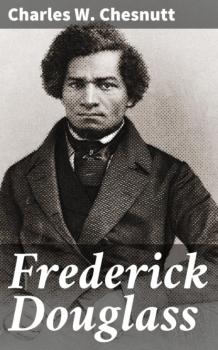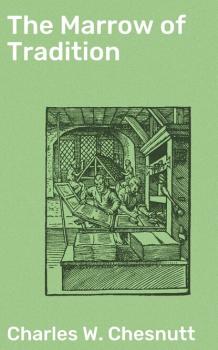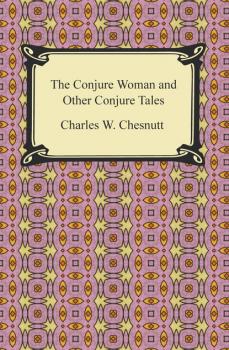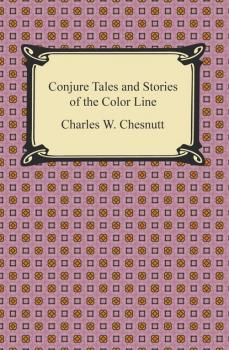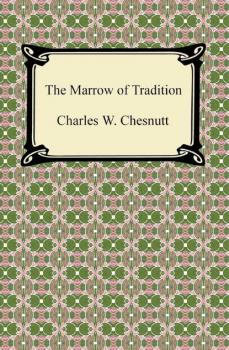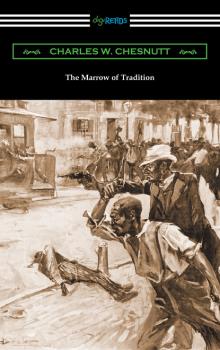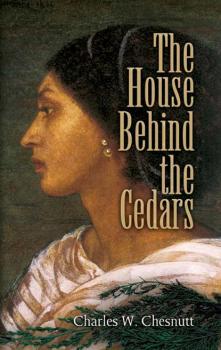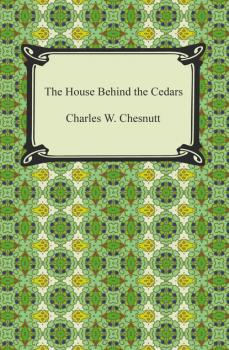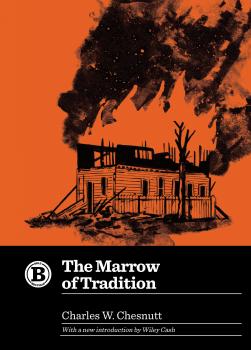Charles W. Chesnutt
Список книг автора Charles W. ChesnuttFrederick Douglass
"Frederick Douglass" by Charles W. Chesnutt. Published by Good Press. Good Press publishes a wide range of titles that encompasses every genre. From well-known classics & literary fiction and non-fiction to forgotten−or yet undiscovered gems−of world literature, we issue the books that need to be read. Each Good Press edition has been meticulously edited and formatted to boost readability for all e-readers and devices. Our goal is to produce eBooks that are user-friendly and accessible to everyone in a high-quality digital format.
The Wife of his Youth and Other Stories of the Color Line, and Selected Essays
"The Wife of his Youth and Other Stories of the Color Line, and Selected Essays" by Charles W. Chesnutt. Published by Good Press. Good Press publishes a wide range of titles that encompasses every genre. From well-known classics & literary fiction and non-fiction to forgotten−or yet undiscovered gems−of world literature, we issue the books that need to be read. Each Good Press edition has been meticulously edited and formatted to boost readability for all e-readers and devices. Our goal is to produce eBooks that are user-friendly and accessible to everyone in a high-quality digital format.
The Conjure Woman and Other Conjure Tales
Charles W. Chesnutt (1858-1932) was an author, essayist and political activist whose works addressed the complex issues of racial and social identity at the turn of the century. Chesnutt's early works explored political issues somewhat indirectly, with the intention of changing the attitudes of Caucasians slowly and carefully. His characters deal with difficult issues of miscegenation, illegitimacy, racial identity and social place. The stories in «The Conjure Woman and Other Conjure Tales» were Chesnutt's first great literary success. This collection of thirteen short stories is told by a former slave named Uncle Julius to a white couple who have recently moved to the South. Uncle Julius's tales feature supernatural elements such as haunting, transfiguration, and conjuring that were typical of southern folk tales. In this collection, «Po' Sandy» recounts how a woman changed her lover into a tree to try and protect him. Another story, «Sis' Becky's Pickaninny,» tells the tragic story of a slave woman who is parted from her baby when the plantation owner sells her for a race horse.
Conjure Tales and Stories of the Color Line
Charles W. Chesnutt (1858-1932) was an author, essayist and political activist whose works addressed the complex issues of racial and social identity at the turn of the century. Chesnutt's early works explored political issues somewhat indirectly, with the intention of changing the attitudes of Caucasians slowly and carefully. His characters deal with difficult issues of miscegenation, illegitimacy, racial identity and social place. They also expose the anguish of mix-race men and women and the consequences of racial hatred, mob violence, and moral compromise. «Conjure Tales and Stories of the Color Line» is a collection of eighteen short stories that have a deep moral purpose mixed with elements of magic and conjuring. Included in this collection is Chesnutt's first published short story, «The Goophered Grapevine». It is set in «Patesville» (Fayetteville), North Carolina and is a story within a story in which each story is told by a different narrator. Also in this collection among many others is «The Conjurer's Revenge» that depicts Uncle Julius duping John into buying an old, useless horse.
The Marrow of Tradition
Charles W. Chesnutt (1858-1932) was an author, essayist and political activist whose works addressed the complex issues of racial and social identity at the turn of the century. Chesnutt's early works explored political issues somewhat indirectly, with the intention of changing the attitudes of Caucasians slowly and carefully. However, «The Marrow of Tradition» marked a turning point in Chesnutt's career, with its direct and overt treatment of racism and political injustices in the South. The story of the white Carterets and the mixed-race Millers, whose lives are intertwined because the wives are half sisters, delves into a wide range of social and race issues. The novel's depiction of lynchings that occurred during the Wilmington Race Riot proved to be too controversial for readers of the time; however, Chesnutt considered it his best, and modern critics have recognized the novel as a milestone in the Civil Rights movement.
The Marrow of Tradition
Charles W. Chesnutt was an author, essayist, and political activist whose works addressed the complex issues of racial and social identity at the turn of the century. Chesnutt’s early works explored political issues somewhat indirectly, with the intention of changing the attitudes of Caucasians slowly and carefully. However, “The Marrow of Tradition” marked a turning point in Chesnutt’s career, with its direct and overt treatment of racism and political injustices in the South. The story of the white Carterets and the mixed-race Millers, whose lives are intertwined because the wives are half sisters, delves into a wide range of social and race issues. The novel’s depiction of lynchings that occurred during the Wilmington Race Riot proved to be too controversial for readers of the time; however, Chesnutt considered it his best, and modern critics have recognized the novel as a milestone in the Civil Rights movement. This edition includes a biographical afterword.
The House Behind the Cedars
Charles Chesnutt was perhaps the most influential African-American fiction writer during the late nineteenth and early twentieth centuries. The House Behind the Cedars, his dramatic masterpiece, was crafted during the tumultuous post-Civil War era in the South, when many in white society feared the «evils» of interracial relationships. Boldly, with vivid detail and memorable characters, this novel explores the practice of «passing,» as John and Rena Walden, two light-skinned African Americans, step over the color line to share in the American Dream.Conceived by a novelist who himself had once considered «passing,» The House Behind the Cedars continues as one of the bravest, most compelling, and most important explorations of racism in American fiction.
The House Behind the Cedars
Charles W. Chesnutt (1858-1932) was an author, essayist and political activist whose works addressed the complex issues of racial and social identity at the turn of the century. Chesnutt's early works explored political issues somewhat indirectly, with the intention of changing the attitudes of Caucasians slowly and carefully. His characters deal with difficult issues of miscegenation, illegitimacy, racial identity and social place. They also expose the anguish of mix-race men and women and the consequences of racial hatred, mob violence, and moral compromise. Originally published in 1900, «The House Behind the Cedars» explores the South's obsession with race. A drama of a brother and sister who «pass for white» during the dangerous days of Reconstruction, this novel offers a realistic, unsentimental perspective on the role of race in American 19th century life. The story entails deception, but it is also an account of passion that impairs boundaries placed on it by cruel, illogical standards.
The Marrow of Tradition
On November 10, 1898, a mob of 400 rampages through the streets of Wilmington, North Carolina, killing as many as 60 citizens, burning down the newspaper office, overthrowing the newly elected leaders, and installing a new white supremacist government. The Wilmington Race Riots—also known as the Wilmington Insurrection and the Wilmington Massacre, is the only coup d’etat on American soil. The violence was prompted by the increasing political powers African Americans in the town were gaining during Reconstruction. <i>The Marrow of Tradition</i> is a fictionalized account of this important, under-studied event. Charles W. Chesnutt, an African American writer from North Carolina who lived in Cleveland as an adult and was the first black professional writer in the nation, narrates the story of “Wellington” North Carolina through William Miller, a black doctor, and his wife, Janet, who is both black and the unclaimed daughter of a prominent white businessman. Along with dozens of other characters, including a black domestic servant whose speech is rendered in vernacular dialect, they create a composite of Reconstruction and the violent racial politics created in backlash. The novel is also a masterful work of art that stands on its own: gripping, nuanced, and wholly original.
